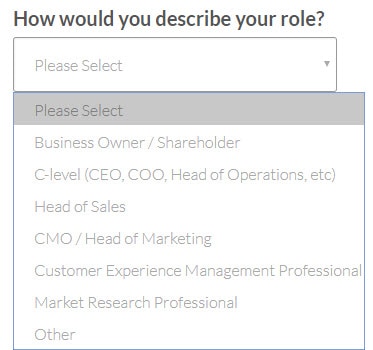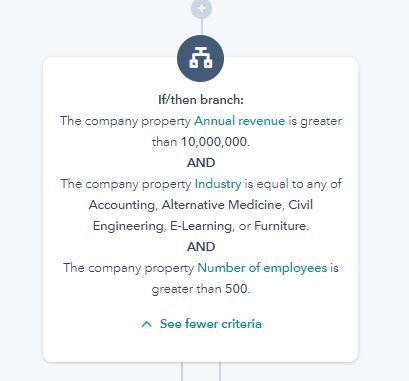MQL (Marketing Qualified Lead) is a relatively well-known term in B2B Marketing circles but there is little real world advice on what they are or how to apply the idea in your business.
In this post we’ll look at practical approaches to identify and act on your MQLs in a way that will grow your business long term.
What is an MQL (Marketing Qualified Lead)
First things first, here is a concise definition of a B2B MQL:
An MQL (Marketing Qualified Lead) is a business contact with the characteristics of someone who will buy from your organisation, just not in the near term.
In B2B marketing terms, MQLs must be
- Target customer personas, i.e. they must be the business roles that tend to buy your services.
- Working at a company in your target firmographics, i.e. they must be employed at companies that tend to buy your services.
- Demonstrating an interest in products or services that you can sell to them
These days pretty much every MQL will start life as a subscriber via your inbound or content marketing process. Determining which subscribers should be moved to MQLs, means collecting and applying the above information.
As a Marketer, there are several ways your can automate and semi-automate the process so you don’t have to manually investigate each and every subscriber to your blog.
Identifying Target Personas
You can ask customers for their job title when they fill out your download form but a better, more accurate, approach is to add a Persona field to your CRM and use that on your form instead.
Using a Persona field means you can summarise different job titles into neat Persona groups and not have to fuss endlessly with the million different titles people seem to have these days.
For example, use the Persona of “Business Owner” to cover Shareholder, Director, Founder, Partner, etc.
Or “C-Level” to cover: COO, CEO, CTO, CCO, etc.


Collecting Firmographics
This can be more difficult to automate as, in terms of accuracy, there is no better approach than physically looking at a company’s website to get an understanding of what it does.
However, there are a range of company data services that, given a URL, will estimate key firmographic information. This data can often be integrated directly into Company records in your CRM and used in workflows.
Some of the more well known data companies include
None of these services is 100% accurate but they do provide the ability automate some MQL process.
Once you have this information you can apply it in your B2B marketing automation workflows.

Determining Interest
Actions speak louder than words; so watch your contacts to see what they are doing to determine which subscribers are MQLs.
Content Downloaded
The first indicator of interest is the content subscribers download. Ensure each piece of content is tagged in your systems on at least two scales:
- Position in the pre-sale Customer Journey: Awareness, Consideration, Purchase
- Topic or subject area
MQLs will be mostly looking at content in the Awareness and Consideration phases of the customer journey.
Marketing Email Clicks
Your handy dandy marketing automation system can be a wealth of behavioural data when determining which contacts are MQLs and which are just Subscribers.
Using marketing email tracking statistics you can easily identify people interacting with your content.
Don’t bother so much with email opens (as they can be quite misleading and not indicative of engagement) but if a person clicks on an email link it’s a reasonable indication of interest in the subject.
So, try building these lists or reports and add them into your scoring process for MQLs
- Contacts by marketing links clicked, by content area
- Contacts by total number of marketing links clicked
Pages Viewed
That same marketing automation system should be able to provide a list of which pages contacts have viewed. Look for people that are coming back to the site often, even (especially) if they are not coming from marketing link clicks.
Try building this report;
- Contacts by pages viewed, including last time seen and last page seen.
Scoring and Applying the data
Build workflows in your marketing automation system to capture and score each of your subscribers using the information collected.
Many systems have dedicated lead scoring tools to help in the process.
What You Should Do with MQLs
You only have one goal with an MQL: keep your brand in front of them.
By definition, an MQL is a prospective customer. They’re just not ready to buy today. However, if you play your cards right, they will be ready to buy at some time in the future.
In B2B sales, where sales lead times can be measured months or even years, this is very important . Someone interested in what you sell might take 12 months or more before the right budget is available or the organisation is ready to make the changes, or a new manager has come on board and is ready to commit.
If you do nothing in the intervening time they will very likely forget about you and buy from the company they last spoke with.
I’ve lost count of the number of times people on our nurture list have emailed or called after 12 months or more and said: “I finally have budget for that project – when can we meet to work out what needs to be done”.
This is the lead nurturing process and is critical to success.
The trick is to keep them on your list with interesting, informative and maybe even challenging content. You don’t want them to get bored and unsubscribe.
Metrics to Report
Just like everything else in your business, you should be reporting on your MQLs in a meaningful way.
Your reporting should include:
- Number of MQLs created by time period (day, week, month depending on your business
- Sources – which sources convert the best: LinkedIn Advertising, Adwords Advertising, this landing page or that landing page.
- Sales Conversion – this is critical. You want to be able to look back and see which sources convert the most leads to MQLs so you can optimise for the production of MQLs in the business
Moving MQLs to SQLs
There comes a time in every MQL’s life when you wish them farewell and hand them over to the next stage of the process: SQL (Sales Qualified Lead).
This is a good thing – you’re not in the business of making MQLs – you are in the business of making sales.
We’ll discuss the details of the SQL process in another post but for now we can focus on the key difference between an MQL and SQL: readiness to buy
Typically you can identify readiness to buy by examining what the contact does.
Mostly they will start looking at Bottom of the Funnel (BOFU) content:
- Case studies
- Testimonials
- Requests to call or set up a meeting (obviously)
- Requesting a demo (obviously)
When this happens make sure your automated workflows are looking for this change and you can “pop” them over to SQL status and alert sales to take a more active approach.






